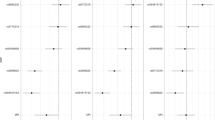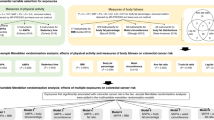Abstract
We examined the association between self-reported occupational and recreational physical activity and the subsequent risk of colorectal cancer in a population-based cohort in Norway. During a mean follow-up time of 16.3 years for males and 15.5 years for females, 236 and 99 colon cancers and 170 and 58 rectal cancers were observed in males and females, respectively, among 53,242 males and 28,274 females who attended the screening between 1972 and 1978. Physical activity at a level equivalent to walking or bicycling for at least four hours a week during leisure-time was associated with decreased risk of colon cancer among females when compared with the sedentary group (RR = 0.62, 95% CI 0.40-0.97). Reduced risk of colon cancer was particularly marked in the proximal colon (RR = 0.51, 95% CI 0.28-0.93). This effect was not observed for occupational physical activity alone, probably due to a narrow range of self-reported physical activity at work among females. However, by combining occupational and recreational physical activity we observed an inverse dose-response effect as increasing total activity significantly reduced colon cancer risk (P for trend = 0.04). Among males 45 years or older at entry to the study, an inverse dose-response effect was observed between total physical activity and colon cancer risk (P for trend = 0.04). We also found in males a stronger preventive effect for physical activity in the proximal as compared to distal colon. In addition, we found a borderline significant decrease in colon cancer risk for occupational physical activity in males 45 years or older when compared to the sedentary group (RR = 0.74, 95% CI 0.53-1.04). All results were adjusted for age, body mass index, serum cholesterol and geographic region. No association between physical activity and rectal cancer was observed in males or females. The protective effect of physical activity on colon cancer risk is discussed in regard to energy balance, dietary factors, age, social class, body mass index and gastrointestinal transit time.
This is a preview of subscription content, access via your institution
Access options
Subscribe to this journal
Receive 24 print issues and online access
$259.00 per year
only $10.79 per issue
Buy this article
- Purchase on Springer Link
- Instant access to full article PDF
Prices may be subject to local taxes which are calculated during checkout
Similar content being viewed by others
Author information
Authors and Affiliations
Rights and permissions
About this article
Cite this article
Thune, I., Lund, E. Physical activity and risk of colorectal cancer in men and women. Br J Cancer 73, 1134–1140 (1996). https://doi.org/10.1038/bjc.1996.218
Issue Date:
DOI: https://doi.org/10.1038/bjc.1996.218
This article is cited by
-
Walking time, sports activity, job type, and body posture during work in relation to incident colorectal cancer: the JACC prospective cohort study
Cancer Causes & Control (2022)
-
Integration of genomics, metagenomics, and metabolomics to identify interplay between susceptibility alleles and microbiota in adenoma initiation
BMC Cancer (2020)
-
Effects of physical activity on colorectal cancer risk among family history and body mass index subgroups: a systematic review and meta-analysis
BMC Cancer (2018)
-
Physical activity patterns and the risk of colorectal cancer in the Norwegian Women and Cancer study: a population-based prospective study
BMC Cancer (2018)
-
Potential biomarkers associated with oxidative stress for risk assessment of colorectal cancer
Naunyn-Schmiedeberg's Archives of Pharmacology (2017)



